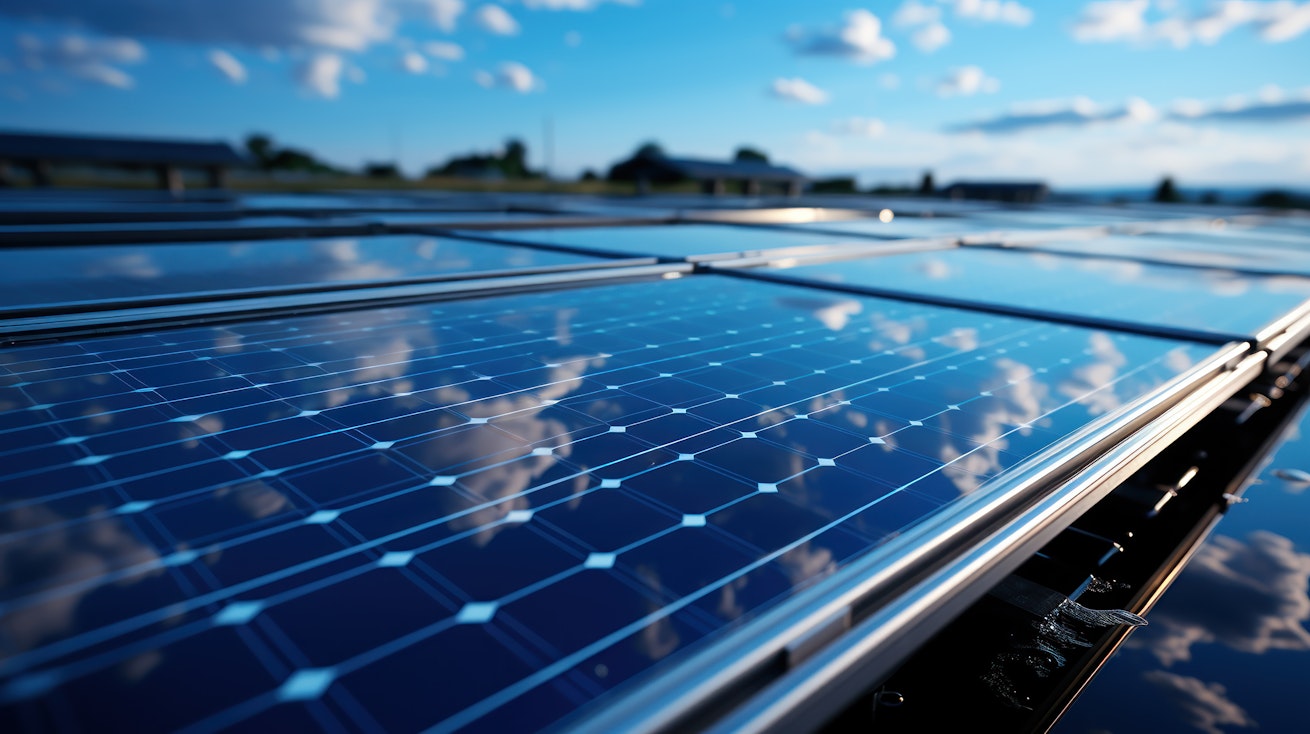- Solar energy blog
- Expanding the limits of solar cell efficiency
Expanding the limits of solar cell efficiency
Review the latest efficiency trends and innovations in components like busbars and fingers that are raising solar performance.


Álvaro Gómez
Technical Advisor
Álvaro is a Technical Advisor at RatedPower, where he oversees the LATAM market, with a background in electrical engineering and experience as a photovoltaic developer. His deep technical knowledge and ability to understand customer needs have been instrumental in RatedPower's success in the LATAM market.

Content
Solar power has emerged as one of the fastest-growing renewable energy sources worldwide.
As solar electricity capacity expands, there is an intense focus on maximizing the efficiency of solar photovoltaic (PV) cells. Even small gains in solar cell efficiency can make a big difference when multiplied over thousands of panels.
This blog will examine recent advances in solar efficiency and the factors driving improvements. We will also provide a quick look at solar cell components like busbars and fingers that play a primary role in performance.

How do solar modules work?
Solar modules generate electricity through the PV effect.
Solar panels contain two semiconductor layers — positive type (p-type) and negative type (n-type). These join together to form a p-n junction. PV cells consist of semiconductor materials that naturally release electrons when exposed to sunlight. Therefore, when sunlight hits the solar cell, photons are absorbed by the semiconductors, energizing the electrons.
The excited negative electrons move in one direction, while the positive flow the other way. This motion of positive and negative charges creates an electric current. Then, metal conductive plates on the cell collect the current and channel it into electrical wires.
The electricity generated from solar modules is in the form of direct current (DC) power. A solar instrument called an inverter then converts the DC into alternating current (AC), which feeds into the electric grid. For off-grid solar systems, the DC power may be sent to batteries for storage before later upended into AC electricity for homes and businesses.
This PV effect produces an electrical current directly from sunlight, making solar power possible. Understanding the p-n junction and flow of electrons allows for more innovations to increase solar cell efficiency.

What is solar module efficiency?
Solar cell efficiency refers to the percentage of sunlight energy converted into electrical energy by a photovoltaic device. It measures how effectively solar cells convert absorbed sunlight into usable electricity.
Not all sunlight striking a cell generates power. Much of the energy is lost due to various design and material factors. Understanding these loss mechanisms is key to improving efficiency.
One potential factor is the solar spectrum and photon energy. Sunlight contains a wide range of wavelengths, from ultraviolet to infrared. Some photons are reflected or pass through the cell, while others are absorbed as heat instead of generating current. Only photons in the optimal energy range contribute to electricity production.
Reflection is another issue, with over 30% of sunlight bouncing off untreated silicon surfaces. Anti-reflection coatings can help to reduce these losses.
Other factors that impact solar module efficiency include:
temperature
recombination
age and degradation
Solar module efficiency is a significant metric for PV technologies. Even small gains in efficiency can make a difference when multiplied over large solar arrays and projects. That’s why ongoing research pushes for higher efficiency through new designs and materials.
Improving solar module efficiency
Projections show that solar module capacity worldwide will more than double in the coming years. This, coupled with decreasing production costs and faster manufacturing, has driven massive growth.
One area of focus is optimizing the solar cell busbars and fingers. Busbars are thin strips of conductive material that transport electricity between solar cells and the inverter. A busbar’s design affects its efficiency.
There is debate around how many busbars to include per cell. The theory is that more busbars allow greater current flow, causing electrons to move faster. But busbars also cause tiny amounts of shading, potentially leading to a loss in power generation.
Solar fingers, made by companies like Novergy, are lightweight, flexible solar panels acting as busbars to connect cells. Their flexible ribbon design causes minimal shading compared to traditional busbars. Fingers also utilize monocrystalline silicon, which is more efficient than polycrystalline silicon. Options like custom connection patterns, thinner ribbons, and processing innovations further improve performance.
As busbar and finger technology advances, solar module efficiency incrementally improves. Combined with other solar innovations, this drives more productive and cost-effective solar power generation.

Benefits of solar busbars and fingers
Solar busbars and fingers offer several advantages that improve module performance. Careful engineering of busbar and finger design, materials, and integration with solar cell technologies has become an important focus area for increasing module efficiency.
Lower electrical resistance
Busbars provide a direct conductive pathway between cells compared to traditional wiring methods. This path reduces resistive power losses as current flows through the module. The reduction in resistance allows electrons to flow more freely through the system.
Increased energy output
By minimizing resistive losses, busbars allow solar technicians to use more of the electricity generated. This results in higher energy yield from the solar panels and greater overall solar system productivity.
Centralized distribution
Busbars offer a centralized collection and distribution system for the solar cells’ current output. Therefore, they facilitate easy system expansion by enabling simple connections. The centralized design makes integrating additional panels or strings straightforward.
Scalability
The standardized busbar design makes combining and scaling multiple solar panels into larger systems easier. Technicians can wire strings of panels together with standardized busbars, simplifying the construction of solar farms and large-scale systems.
Lightweight, flexible options
Next-gen finger or ribbon busbar technologies are lightweight and flexible. These features enable new designs and applications for solar modules. Thinner, bendable busbar materials allow for creative mounting and installation possibilities.
Higher efficiency cell compatibility
Busbars can work with high-efficiency monocrystalline silicon cells to maximize performance. Optimizing busbar design for the cell type ensures maximum electricity generation.
Thoughtful solar busbar and finger design improve module efficiency and energy production. These advantages help explain why busbars have become a standard feature of solar panels.
Latest stories
Related posts
Technology and engineering
Outsmarting congestion: How efficient solar design helps navigate Nordic grid limits
Learn how Nordic operators and solar developers are adjusting to tighter grid conditions and how policy and design decisions are keeping projects on track.
Updated 16 DEC, 25

Technology and engineering
The rise of ultra-thin perovskite solar cells
Learn about Japan’s $1.5B initiative to commercialize ultra-thin, flexible perovskite solar cells and how it could transform the solar landscape globally.
Updated 30 SEP, 25

Technology and engineering
The green hydrogen boom in LatAm
Latin America is emerging as a green hydrogen leader. Learn how LatAm countries are leveraging solar and wind power to drive green hydrogen production.
Updated 22 JUL, 25

- RatedPower
- Solar energy blog
- Expanding the limits of solar cell efficiency
 Watch a demo
Watch a demo Ask our AI Product Expert
Ask our AI Product Expert

